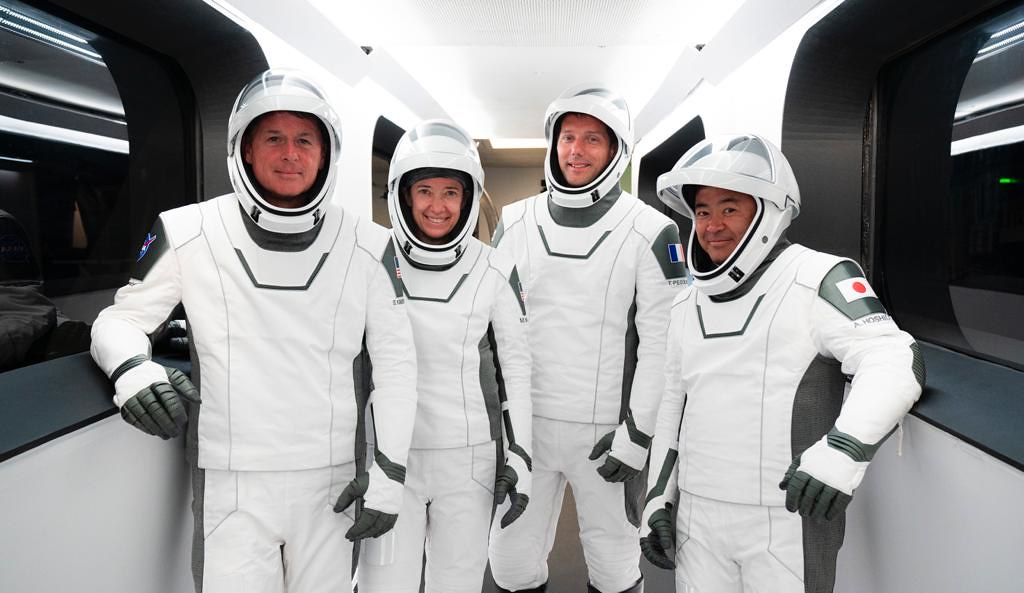SpaceX, NASA delay Crew-2 astronaut launch to Friday due to weather
Liftoff is now set for Friday, April 23.

CAPE CANAVERAL, Fla. — SpaceX and NASA have delayed the next launch of four astronauts to the International Space Station by 24 hours due to unfavorable weather conditions along the flight path.
A SpaceX Crew Dragon capsule and Falcon 9 rocket was scheduled to launch the mission, called Crew-2, early Thursday (April 22) from Pad 39A at NASA's Kennedy Space Center here in Florida. But today, NASA announced the one-day delay, citing poor weather conditions along the rocket's flight path. Instead, SpaceX is now targeting a launch on Friday (April 23). Liftoff is set for 5:49 a.m. EDT (0949 GMT).
"I'm sure you heard that you probably heard we're going to have to delay a day," NASA's Bob Cabana, Kennedy Space Center director, told reporters in a morning briefing. "We are not going to be able to launch tomorrow morning."
"Although the weather is probably going to look great here at the launch site, we're worried about the downrange wind and wave heights in case of an abort," he added.
Related: SpaceX is launching 200 experiments to space on Crew-2 flight
Live updates: SpaceX's Crew-2 astronaut mission for NASA
Crew Dragon is equipped with a special launch escape system that allows the vehicle to push the crew to safety in the event of an emergency during ascent. As such, the weather team at the 45th Space Wing must monitor not only the weather at the launch site, but weather along the rocket's trajectory as well as any potential landing sites that the capsule could potentially splashdown at in the unlikely event of an in-flight abort.
On Tuesday, launch weather officer Brian Cisek of the 45th Space Wing told Space.com that the weather is looking very favorable for launch, with conditions improving to 90% favorable on Friday. Cisek said that is due to a high pressure front that's moving into the area and pushing out the storms that have been plaguing the space coast earlier in the week.
Get the Space.com Newsletter
Breaking space news, the latest updates on rocket launches, skywatching events and more!
"As soon as this front moves through, it's going to be absolutely beautiful on Friday morning," Cabana said. "So we're going to launch then."
Related: SpaceX's Crew-2 astronaut mission in photos

The international crew on Dragon includes NASA astronauts Shane Kimbrough and Megan McArthur, along with European Space Agency astronaut Thomas Pesquet and Japanese Aerospace Exploration Agency astronaut Ahkihiko Hoshide. They will stay on station for six months,conducting a plethora of research experiments before returning home later this year.
If Friday's launch goes as planned, the Crew-2 astronauts will strap into the Dragon capsule early Friday morning and arrive at the International Space Station on Saturday at 5:10 a.m. EDT (0910 GMT). The Crew-2 astronauts will join seven other crewmates already onboard the space station, including the four astronauts of SpaceX's Crew-1 mission for NASA who are scheduled to return to Earth April 28.
SpaceX is one of two commercial companies with multibillion-dollar contracts to fly astronauts for NASA. (The other company is Boeing, which has yet to fly astronauts.) Crew-2 is SpaceX's third crewed flight for NASA after the launch of Crew-1 in November 2020 and a Demo-2 mission in May 2020.
Follow Amy Thompson on Twitter @astrogingersnap. Follow us on Twitter @Spacedotcom or Facebook.
Join our Space Forums to keep talking space on the latest missions, night sky and more! And if you have a news tip, correction or comment, let us know at: community@space.com.

Amy Thompson is a Florida-based space and science journalist, who joined Space.com as a contributing writer in 2015. She's passionate about all things space and is a huge science and science-fiction geek. Star Wars is her favorite fandom, with that sassy little droid, R2D2 being her favorite. She studied science at the University of Florida, earning a degree in microbiology. Her work has also been published in Newsweek, VICE, Smithsonian, and many more. Now she chases rockets, writing about launches, commercial space, space station science, and everything in between.
